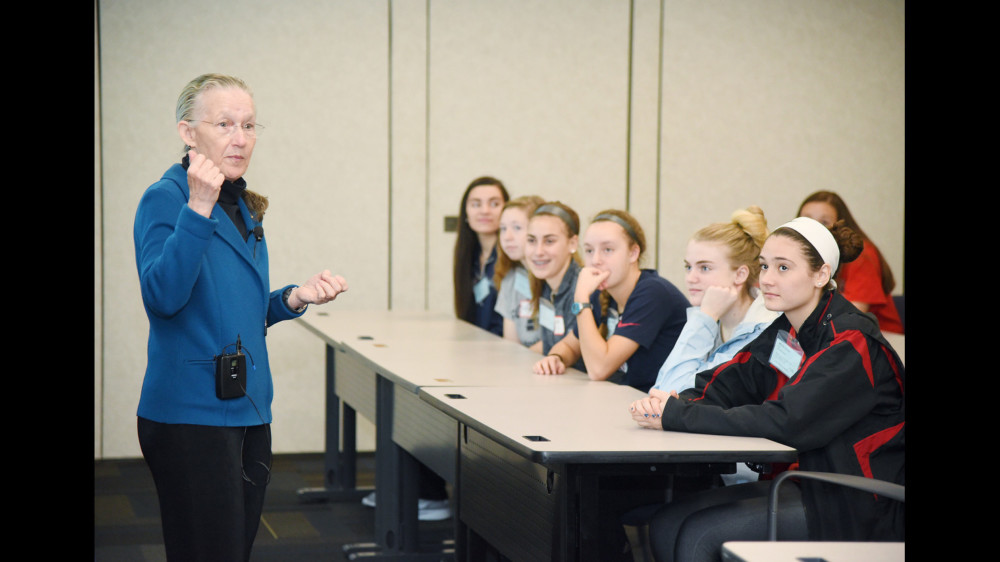By Cindy Huang
The Capital, Annapolis, Md.
WWR Article Summary (tl;dr) Astronaut Mary Cleave and organizers of “Introduce a Girl to Engineering” day say they hope to inspire more girls to go into an industry where they’re significantly under represented. The “Introduce a Girl to Engineering” day included a presentation by Cleave as well as activities to show girls that engineering, a field often associated with tedious math and coding, can also be fun.
The Capital, Annapolis, Md.
Mary Cleave stood in front of a video of her 1985 space flight and talked to 15 middle school girls about her NASA career as a part of a global campaign to promote science and engineering careers to girls.
Rockwell Collins, an aerospace and defense engineering company, hosted Cleave and 15 girls from Central Middle School Thursday for “Introduce a Girl to Engineering” day, which included a presentation by Cleave, a tour and a robotics activity.
Cleave talked about eating Thanksgiving dinner with no gravity to hold down the food, running science experiments and operating the arm of the air craft while her colleagues walked in space.
“You don’t go to space for the food,” she said.
The only woman on the space mission, Cleave joked with colleagues when operating a mechanical part of the ship.
“Get ready,” she recalled saying. “Female driver.”
Organizers and Cleave said they hope to inspire more girls to go into an industry where they’re significantly under represented. They hoped Thursday’s activities will show girls that engineering, a field often associated with tedious math and coding, can also be fun.
At Central Middle, girls make up about a third of the students in the Science, Technology, Engineering and Math program. At Lindale Middle School, North County and South River high schools, girls comprise between a third to 40 percent of the students in the STEM programs.
Women make up about half the U.S. work force but are a smaller percentage of scientists and engineers, according to national data.
Cleave stressed that girls have to get hooked on Science, Technology, Engineering, and Math before middle school, because they start to get social pressures to avoid those interests.
“Boys don’t like girls that are good at math and science because that’s what boys are supposed to do,” Cleave said.
She said projects, such as robotics competitions, help to bring girls and boys together.
Cleave grew up at a time when girls and boys went to separate summer camps and colleges took in a limited number of girls.
She credits a federal law that required schools to give equal opportunities to girls and guys for helping women in science.
She said she probably would not have been recruited to an engineering program at Utah State University without Title IX.
Jaya Aswani, an engineer at Rockwell Collins, was inspired by Cleave.
“I’m used to being the only girl in the room. She has been the only girl in the auditorium,” she said.
The middle school girls said things have changed since Cleave was starting her career. They feel free to pursue their interests in science, technology and sports.
Lilian Baker, a eighth grade student at Central Middle, said she wants to be a doctor. She likes to make things and fix things.
As a young girl, she played a veterinarian to her stuffed animals. After hearing Cleave’s story, she felt inspired to achieve similar success.
“I need to push myself to work harder,” Baker said.
Harley Herndon, another eight grade student from Central Middle, said she hopes to be a sports coach. But she’s curious about science, even if STEM can look intimidating.
When she saw the pieces of the robot laid out on a table, she hoped the project was for another group.
But with instructions, she broke down the task into simpler bits and soon assembled the robot with her team.
“Step by step,” she said. “I can do it.”














































































































































































































































































































































































